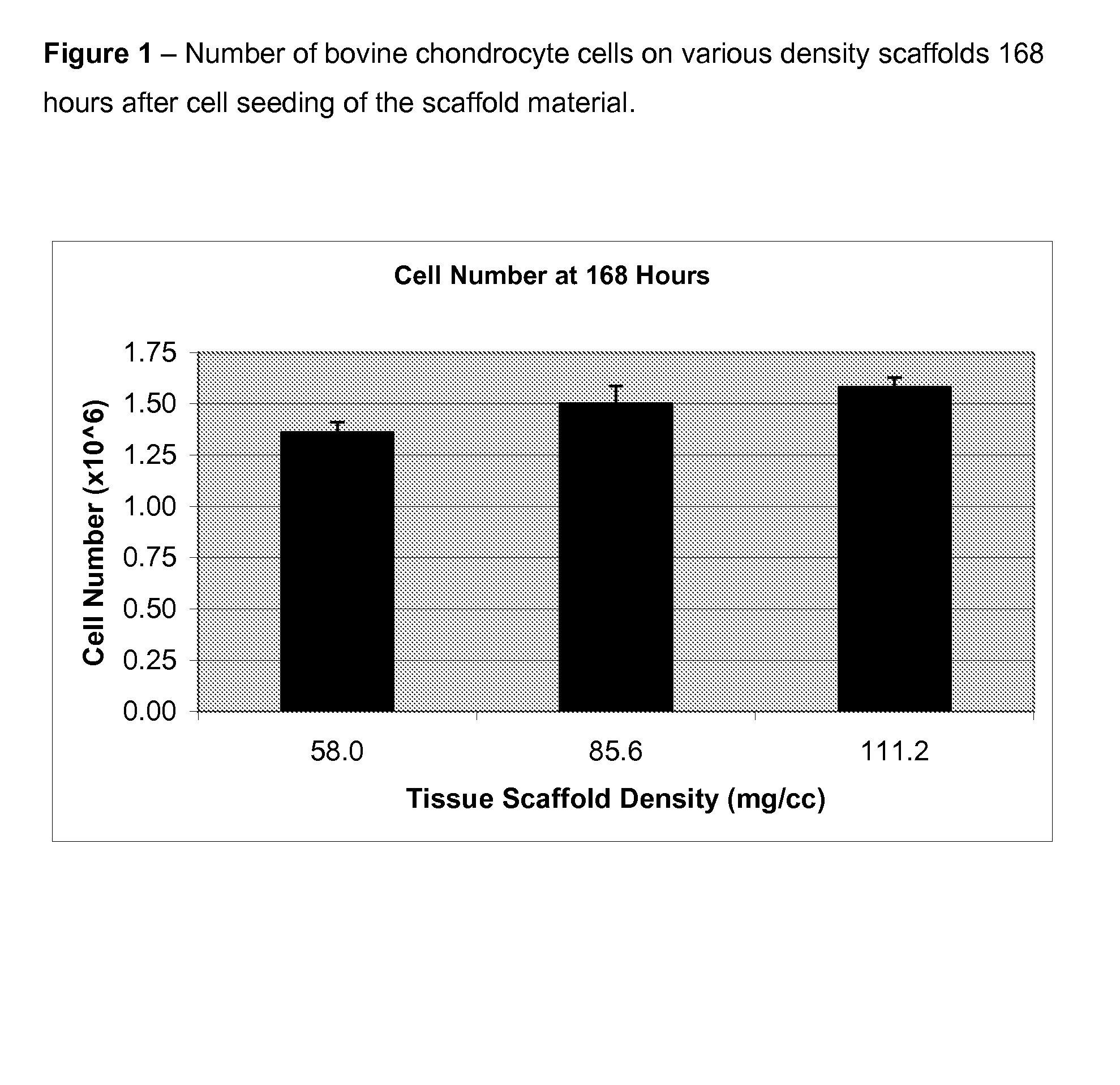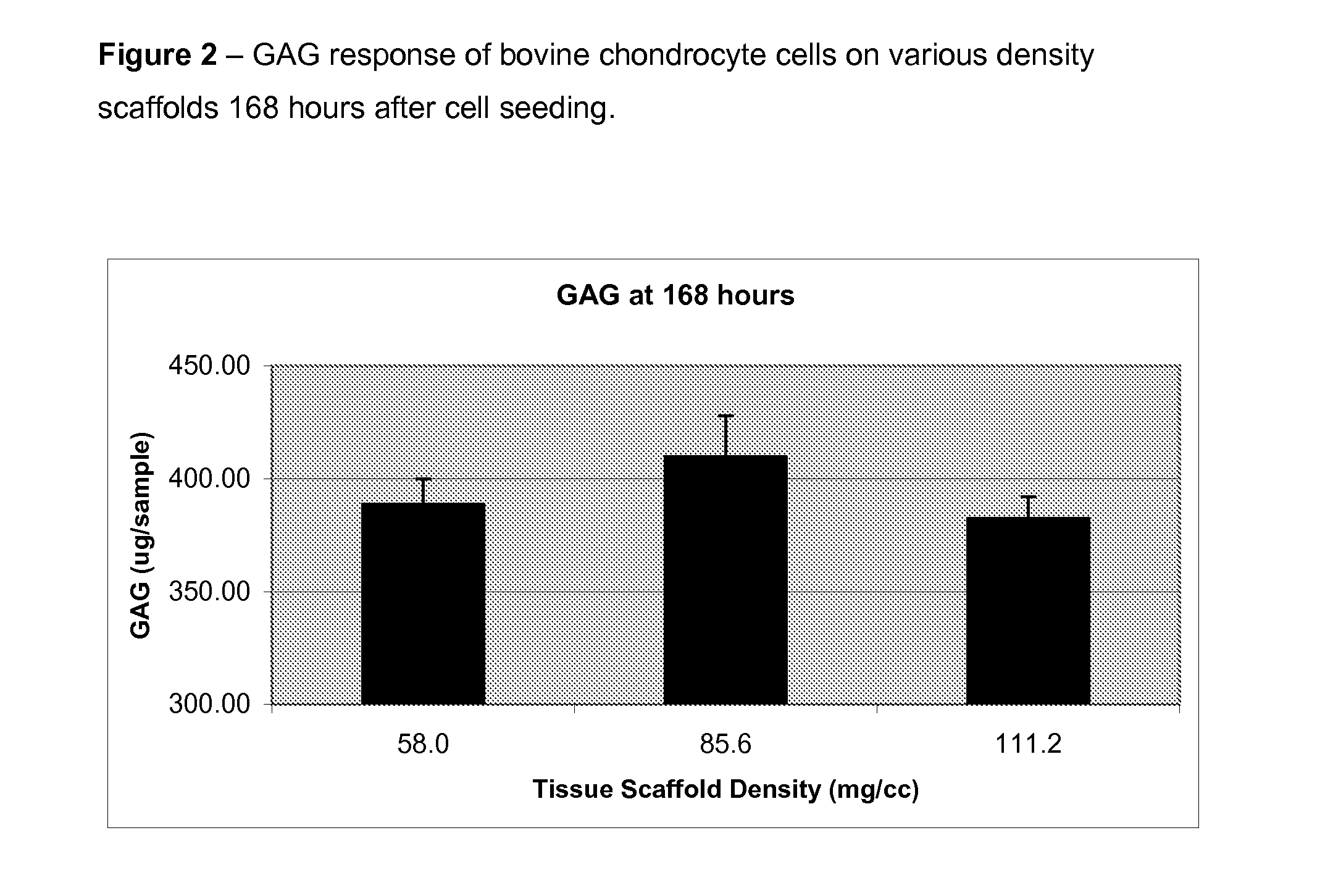Optimum Density Fibrous Matrix
a fibrous matrix and density technology, applied in the field of biodegradable implantable tissue engineering scaffolds, can solve the problems of insufficient one or more of the above criteria of conventional materials, either alone or in combination, and achieve the effects of accelerating tissue ingrowth, maximal cellular activity, and accelerating cell infiltration, migration and proliferation
- Summary
- Abstract
- Description
- Claims
- Application Information
AI Technical Summary
Benefits of technology
Problems solved by technology
Method used
Image
Examples
example 1
[0026]Nonwoven sheets approximately 12 inches by 12 inches by approximately 2 millimeters thick were manufactured using filaments measuring approximately 20 microns in diameter of a copolymer comprised of 90% PGA and 10% PLA using the dry-lay nonwoven technique. The dry-lay process consisted of producing a batt of fiber using a rotary card, and the batts were then consolidated using a needle-punching process. The amount of starting material and number of needle-punches was set for a target density of 90 mg / cc, and a density of 85.6 mg / cc was actually obtained. Discs measuring 5-mm in diameter were punched out from the sheet and sterilized by ethylene oxide gas sterilization. The discs were then seeded with 2.5×10̂6 bovine chondrocyte cells and placed in chondrocyte growth media comprised DMEM-High glucose, supplemented with 10% fetal calf serum [FCS], 10 mM HEPES, 0.1 mM nonessential amino acids, 20 μg / ml of L-proline, 50 μg / ml ascorbic acid, 100 u / ml penicillin, 100 μg / ml of strept...
example 2
[0028]Nonwoven sheets were prepared as in example 1, except that a target density of 60 mg / cc was used and an actual density of 58.0 mg / cc was obtained. Scaffold discs of 5-mm diameter were also prepared as in example 1 and subjected to cell seeding, incubation, and analysis as in example 1. The number of cells attached was found to be 1.3×10̂6 and the GAG content was 388 ug per scaffold.
example 3
[0029]Nonwoven sheets were prepared as in example 1, except that a target density of 120 mg / cc was used and an actual density of 111.2 mg / cc was obtained. Scaffold discs of 5-mm diameter were also prepared as in example 1 and subjected to cell seeding, incubation, and analysis as in example 1. The number of cells attached was found to be 1.58×10̂6 and the GAG content was 382 ug per scaffold.
PUM
| Property | Measurement | Unit |
|---|---|---|
| Diameter | aaaaa | aaaaa |
| Diameter | aaaaa | aaaaa |
| Density | aaaaa | aaaaa |
Abstract
Description
Claims
Application Information
 Login to View More
Login to View More - R&D
- Intellectual Property
- Life Sciences
- Materials
- Tech Scout
- Unparalleled Data Quality
- Higher Quality Content
- 60% Fewer Hallucinations
Browse by: Latest US Patents, China's latest patents, Technical Efficacy Thesaurus, Application Domain, Technology Topic, Popular Technical Reports.
© 2025 PatSnap. All rights reserved.Legal|Privacy policy|Modern Slavery Act Transparency Statement|Sitemap|About US| Contact US: help@patsnap.com


